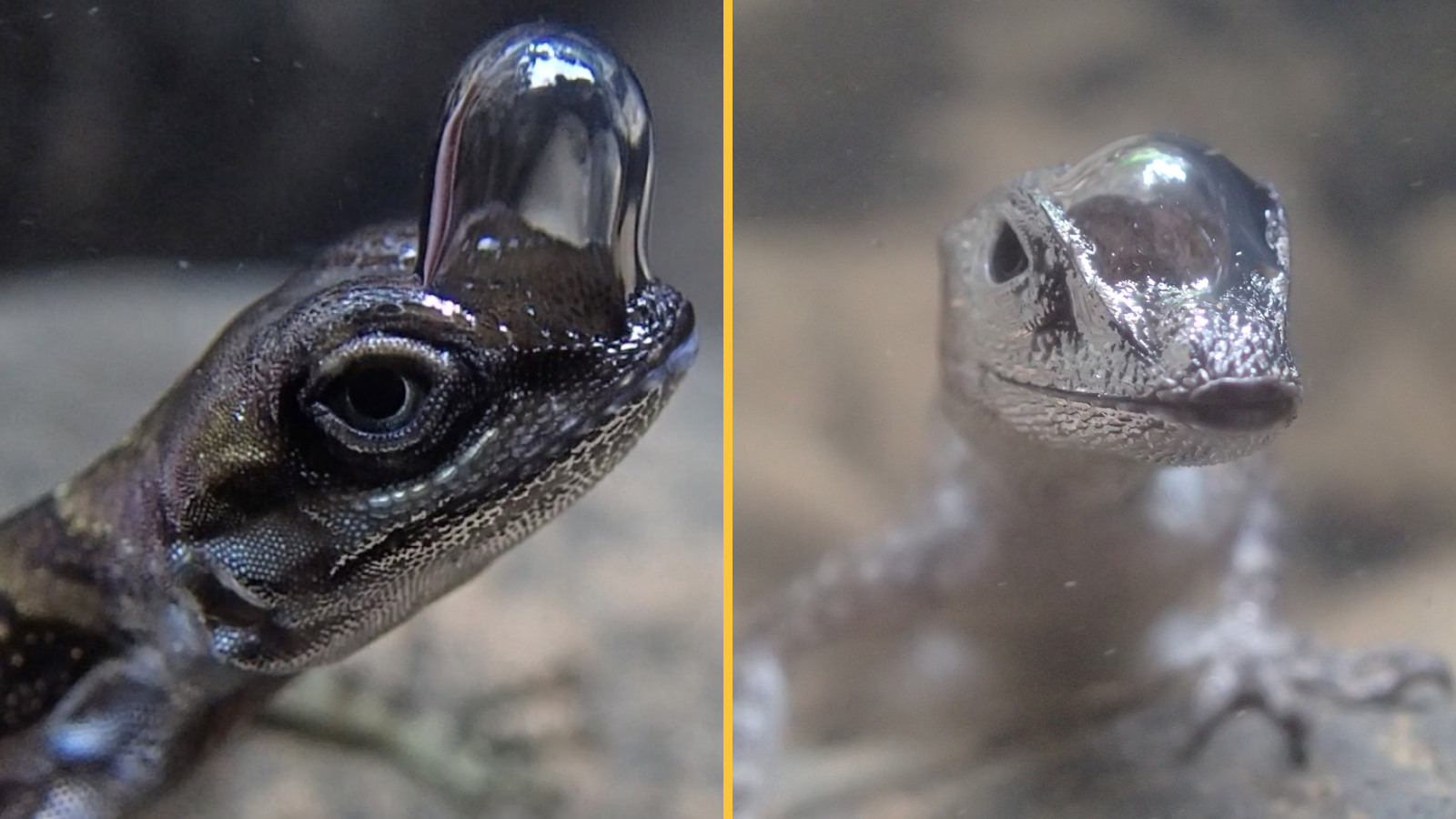
Scuba-diving lizards have an aquatic trick up their sleeves: They can create air bubbles on their foreheads to breathe underwater, enabling them to stay submerged for long periods and escape predators, researchers say.
In 2018, scientists captured the first-ever footage of a semi-aquatic lizard known as a stream anole (Anolis oxylophus) breathing underwater using a bubble of stored oxygen surrounding its snout — an ability that had never been seen before in lizards. Since then, at least 18 other species of anoles have been found to do this too, including water anoles (Anolis aquaticus).
However, until now, researchers had no idea if this bubble enabled these lizards to stay underwater for a long time or if it merely formed as a side effect of their water-repelling skin.
In a study published Sept. 18 in the journal Biology Letters, researchers tested nearly 30 water anoles and found that those using air bubbles stayed underwater 32% longer than anoles without bubbles. In the wild, this extra time underwater likely helps them to evade predators.
"There are a lot of threats in their environment, and it makes sense that they would evolve a unique way of dealing with them using the resource — water — that they have available," study author Lindsey Swierk, assistant research professor in biological sciences at Binghamton University in New York, told Live Science in an email.
Related: Watch chameleon erupt in color 'as if uttering her last words' in her final moments before death
Semi-aquatic water anoles spend most of their time living on boulders close to river banks in forests in Costa Rica and Panama. They are small lizards that can grow up to 8 inches (20 centimeters) long. When threatened, they have been observed jumping into nearby water to escape.
"We know that they can stay underwater at least about 20 minutes, but probably longer," Swierk said.
Upon diving, these anoles exhale to create a bubble that surrounds their head, held on by the lizards' water-repelling skin. "When water anoles dive, their hydrophobic ("water-repelling") skin keeps a slick of air over the body surface," Swierk said.
As the anoles exhale and inhale, the bubble expands and collapses. The researchers suggest this redistributes air on and in an anole's body, giving it sufficient oxygen for long dives.
To test this, scientists collected 28 water anoles from the Rio Java in Costa Rica. The team applied a substance to 13 of the anoles' heads to stop their skin from being water repellant, meaning the bubble would fail to attach, Swierk said.
"We then compared the dive length and the ability to rebreathe bubbles in anoles with and without emollient applied," Swierk said.
In the control group — the anoles with no substance applied — the longest dive recorded was 477 seconds (nearly eight minutes), although this was excluded from the analysis for being an outlier. The longest dive included in the analysis was 308 seconds (just over five minutes). In the group with the substance applied, the longest dive was 254 seconds (over four minutes).
On average, anoles without the substance applied spent 67.5 seconds longer underwater than those with the substance. "These results show that when semi-aquatic anoles are allowed to rebreathe using bubbles, they can dive longer," Swierk said.
Swierk suggests the difference between dive times may have been greatly different if this experiment was conducted in the wild and not in tanks. "The pressure to stay concealed from a real predator, which we didn't use in our study, could nudge the control group's dive times much longer," Swierk said.
Anoles are not the only animals known to use bubbles underwater. For example, diving beetles carry trapped air behind them at the tip of their wing covers. This bubble acts as a "physical gill," exchanging oxygen with the water to replenish the supply inside the bubble.
The team now wants to find out if water anoles use their breathing bubbles in the same way.







